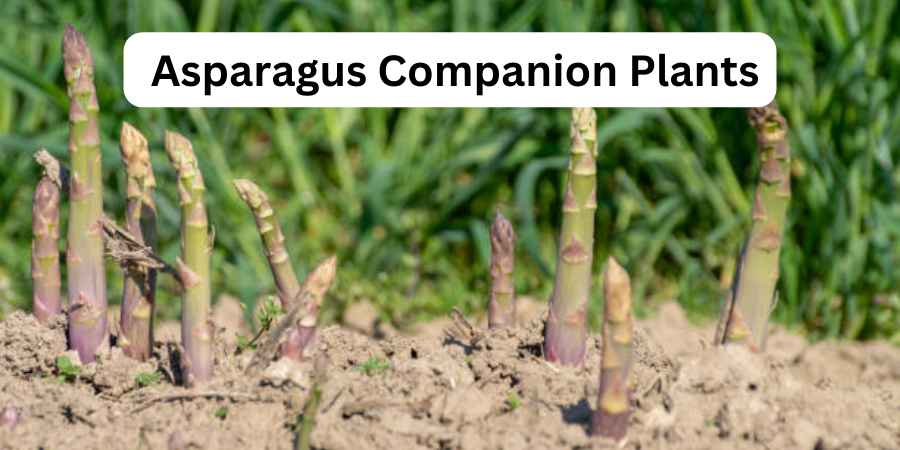Last Updated on June 1, 2025 by Jocelyn
Asparagus benefits from companion planting with strawberries, dill, tomatoes, eggplant, and marigolds. These plants help protect asparagus by repelling pests, reducing weed growth, and improving soil quality.
Their presence supports healthier, stronger asparagus plants and can even enhance the flavor of the spears.
In contrast, avoid planting asparagus near onions, garlic, and potatoes, as these crops compete for nutrients and may stunt asparagus growth.
By choosing the right companions, gardeners can maximize their growing space, increase yield, and maintain a balanced, thriving garden ecosystem.
Table of Contents
ToggleWhat Is Companion Planting and Why Is It Important?
Companion planting is an organic and environmentally friendly gardening practice that has been used for centuries. It is based on the idea that some plants can benefit from being close to each other.
Here’s a simple guide to the importance of asparagus companions :
| Importance | Description |
| Natural Pest Control | Some plants can deter pests like the asparagus beetle. This means you don’t need to use synthetic pesticides. |
| Soil Health | Legumes like peas and beans add nitrogen to the soil, which is a crucial nutrient. Deep-rooted plants like asparagus help improve soil by breaking up heavy soils and helping other plants’ roots access water and nutrients. |
| Spatial Efficiency | Taller plants can provide shade for lower-growing, sun-sensitive crops. Sprawling plants can act as living mulch, suppressing weeds and conserving soil moisture. |
| Pollination and Biodiversity | Companion planting attracts beneficial insects that help with pollination. A variety of plants also means a healthier and more resilient ecosystem. |
Using companion plants with asparagus can lead to fewer problems with pests, better use of space, and potentially a greater harvest.
By understanding the dynamics of asparagus companion planting, you can create a flourishing garden.
11 Best Asparagus Companion Plants
Growing asparagus takes time and patience. It can take about three years for a newly-planted asparagus bed to establish its roots and become productive.
As a perennial vegetable, it can produce for decades, but events in one year can impact the next year’s growth. Companion planting is a great way to manage this long-term investment.
1. Basil
Basil is a great companion plant for asparagus in your garden. Basil (Ocimum basilicum) grows well in USDA Hardiness Zones and needs light from the sun.
It likes rich, well-draining soil. Basil’s aroma helps keep away pests like aphids and beetles from your asparagus. Basil also attracts beneficial insects like predatory wasps, which help control pest populations.

Basil can share space with asparagus because it doesn’t mind a bit of shade. Its leaves enjoy the sun, making it a perfect companion.
Bees and butterflies love basil, which helps with pollination in your garden. Planting basil near your asparagus will help both plants grow better and healthier.
2. Dill
Growing dill plants near asparagus is a great idea because dill is an amazing helper in the garden. Dill flowers attract beneficial insects like Lacewings and ladybugs.
These bugs eat aphids and other asparagus-eating bugs. This is a fantastic way to have natural pest control without using chemicals.
Dill (Anethum graveolens) loves full sun and grows well in rich, well-drained soil. It also thrives in cooler conditions and can grow in the shade of taller plants.
Dill is a very useful and versatile plant because it attracts natural predators like parasitic wasps that eat asparagus beetles.
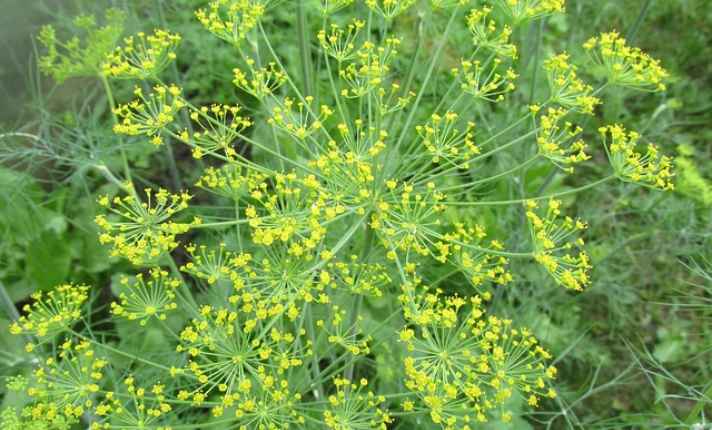
In the USDA Hardiness Zones 2-11, these aromatic herbs are perfect asparagus companion plants. My garden has been so much healthier since I started using dill to keep away common garden pests and protect my asparagus from asparagus pests.
3. Nasturtium
Nasturtium is a wonderful companion plant for asparagus. With its vibrant color and strong floral scent, it looks gorgeous in any garden.
Nasturtium (also known as Tropaeolum) thrives in USDA Hardiness Zones 2-11 and needs full sun and acidic, well-drained soil.
These flowering plants have a dual purpose: adding color and beauty to your garden and offering pest-repelling properties.
Their bright colors and strong scents help deter pests, including asparagus beetles. Nasturtium also attracts beneficial insects, promoting a healthier garden ecosystem.
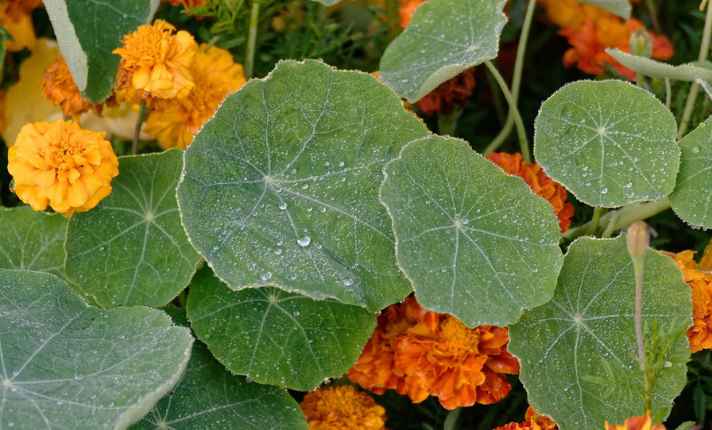
As members of the aster family, they provide efficient pest protection by acting as a trap crop, luring pests away from your asparagus and other vegetables.
This fast-growing plant can serve as an excellent groundcover for weed suppression. When planted near asparagus, nasturtium helps keep weeds down and adds a bit of color to your garden beds.
4. Parsley
When I was planting my asparagus last spring, I decided to add some Parsley near the plants. This was a great decision because Parsley is a fragrant herb known for its many benefits.
For instance, it is high in nitrogen, which helps the asparagus grow better and gives it a more robust, improved flavor.
The botanical name for parsley is Petroselinum crispum, and it thrives in USDA Hardiness Zones 9-11. It enjoys Full sun or light shade and requires Soil that is consistently moist but well-drained.

Another advantage of Parsley is that it is a strongly scented food source for beneficial insects throughout their lifecycles.
This means that while you are waiting for your asparagus to be ready, the parsley can be harvested throughout the growing season, making your garden beds more productive.
However, remember that Parsley is a biennial plant, so it needs to be replanted every two years to ensure an ongoing harvest.
5. Strawberries
Strawberries are great companions for asparagus because they share similar growing conditions and seasonality. Both plants thrive in well-drained soil, which helps them get the nutrients they need.
While asparagus shoots and strawberry fruits mature at different times, they don’t have to compete.
The low-growing strawberry plants act as a ground cover, keeping the soil moisture and reducing weed growth around the asparagus.
These strawberry plants with their shallow root systems cover the ground and help trap moisture in the soil.
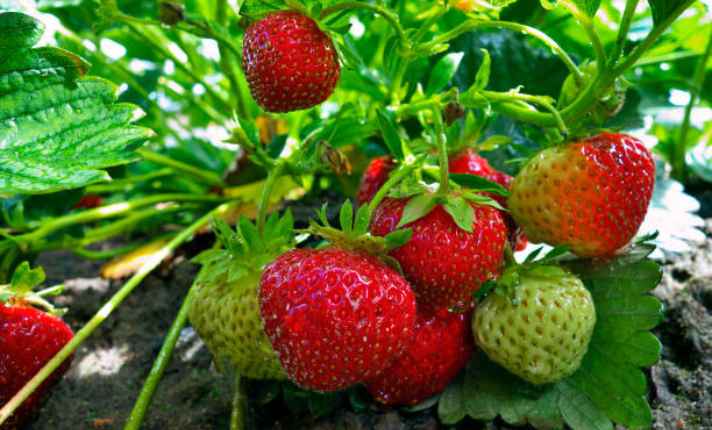
The Strawberry (Fragaria x ananassa) can be planted in USDA Hardiness Zones 4-9 and needs full sun and loamy, rich, well-drained soil.
This plant pairing works well because both plants can be harvested early in the season and are perennials, meaning a bed of asparagus and strawberries will come back every year.
Their different root zones prevent their root systems from competing in the soil.
6. Cilantro
Cilantro is a great companion plant for asparagus in your garden. Also known as Coriandrum sativum, this herb grows well in USDA Hardiness Zones 2-11.
It likes both full sun and partial sun, thriving in moderately moist, well-drained soil. Cilantro has shallow roots and a low profile, which means it won’t compete with asparagus’s taller, deeper roots.
When cilantro is left unharvested, its stems and flowers attract beneficial insects that help control pests. This natural check keeps your garden healthier. Cilantro’s low growth habit also allows more sun rays to reach the asparagus.
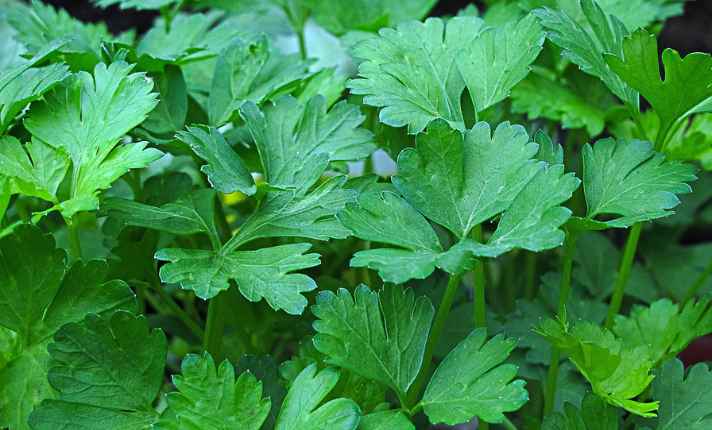
The cilantro can act as a shield, protecting the asparagus from intense heat and helping to keep the growing area cooler. This way, both plants have enough growing space and can unfurl their leaves without trouble, creating a balanced environment.
7. Comfrey
Comfrey is a wonderful plant with pretty bell-shaped pink and purple flowers. These flowers attract many pollinators to the garden, which helps all the other plants.
One of the best things about comfrey is how it can enrich the soil around your asparagus.
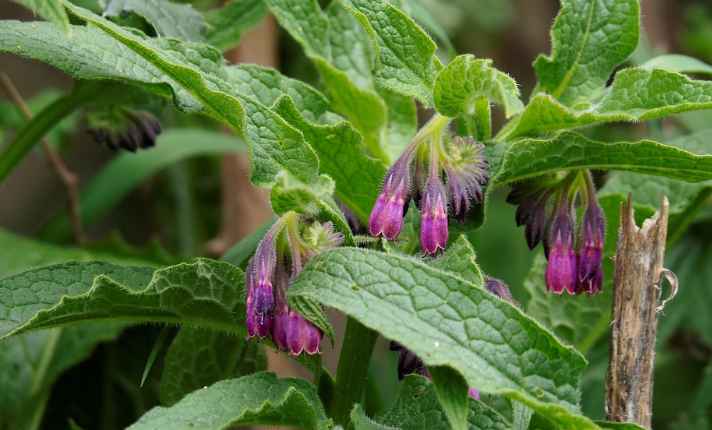
When you mix comfrey into compost, it adds a lot of organic nitrogen, making the compost even better for your garden.
However, comfrey is a very vigorous grower and can become invasive in some locations. To keep these plants under control, you need to do regular pruning or grow them in containers.
8. Tomatoes
Tomatoes are great companions for asparagus. Tomato plants release solanine, a natural deterrent to the asparagus beetle, helping asparagus plants avoid these primary pests and added stress.
In return, asparagus helps ward off common tomato pests like nematodes, which cause root damage.
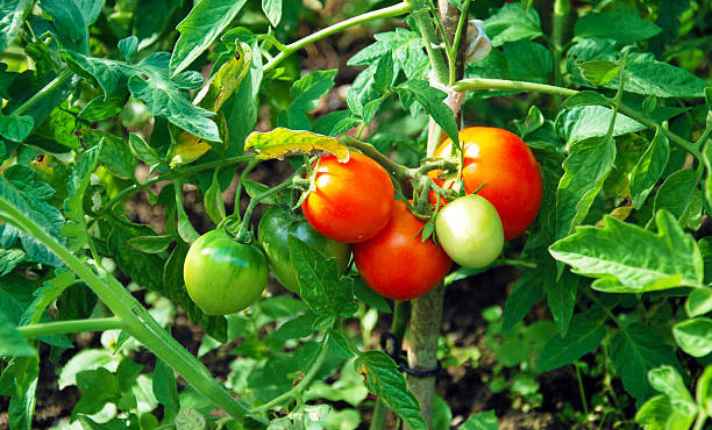
Rich in solanine, tomatoes repel beetles that feast on tender shoots and fronds. Both plants defend each other from their worst enemies, making them ideal garden partners.
Tomatoes (or Solanum lycopersicum) grow best in USDA Hardiness Zones 2-10 with full sun.
9. Peas
Peas are a great companion plant for asparagus. They help keep the moisture in the soil, which is important for asparagus to grow well.
Peas are also called Pisum sativum and can grow in many places, from USDA Hardiness Zones 2-11. They need full sun and moist, neutral soil to thrive.
One amazing thing about peas is that they are legumes. This means they can take nitrogen from the atmosphere and use it.
They do this through a symbiotic relationship with bacteria in their root nodules. These bacteria help peas to convert atmospheric nitrogen into a form that plants can use.
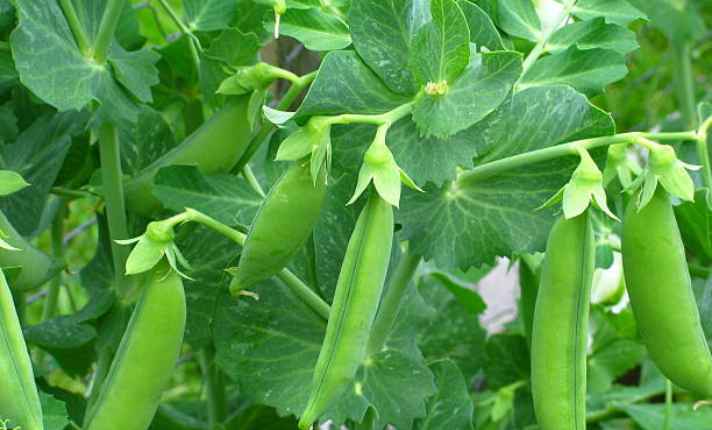
When peas are planted near asparagus, the asparagus gets this extra nitrogen source, which makes it greener and healthier. Also, because peas and asparagus have different growing seasons, they don’t fight for resources.
Peas are usually harvested in late spring or early summer, right when asparagus is finished producing. This makes them perfect partners in the garden.
10. Carrots
Growing carrots alongside asparagus in your garden can be very helpful. Carrots are root vegetables with a special growth habit that works well with asparagus plants.
Carrots have a deep rooting depth, which helps them reach nutrients in the soil that other plants might miss. They also need a lot of space because of their fine roots.
Carrot plants thrive in heavy soil, which can be hard for other plants. This soil provides good aeration and water penetration for the asparagus. The benefits of planting carrots with asparagus include better ground cover for the garden bed.
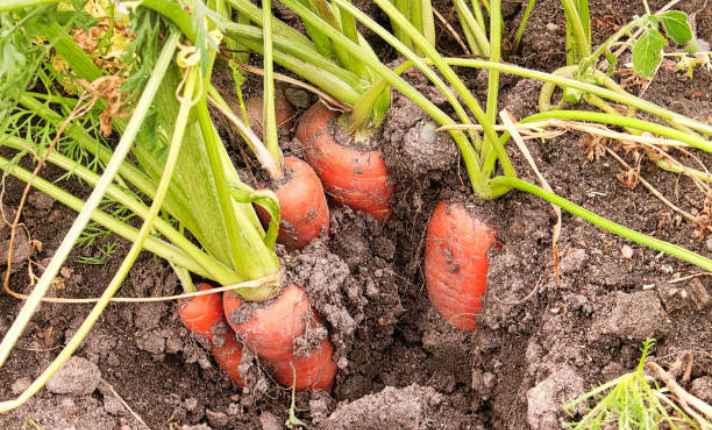
This suppresses weed growth and helps to conserve soil moisture. The feathery tops of carrots add to the dense greenery in your garden, making it look lush and healthy.
By working together, asparagus plants and carrots create a happy and productive garden space.
11. Grapes
Asparagus is one of my favorite plants to grow in the garden. It gets quite tall, which can be a bit of a challenge because it might overshadow shorter plants. That’s why I love planting grapes with it. Grapes grow vertically using trellising systems, so they don’t compete for growing space.
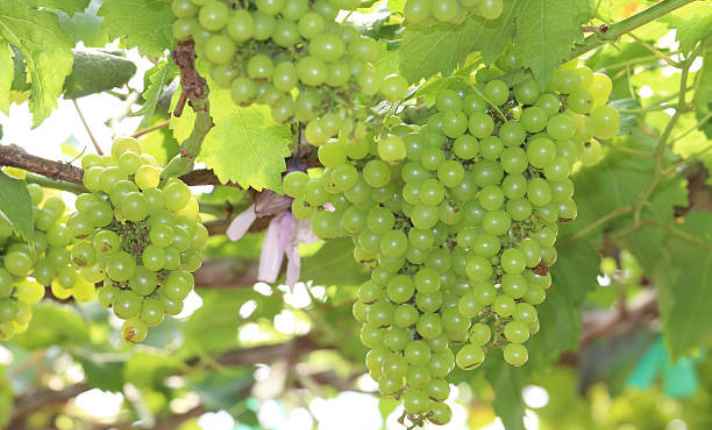
Both of these perennial crops can be planted together in permanent beds and will grow productively for many years. It’s amazing how well they fit together in the garden.
3 Worst Companion Plants for Asparagus
In my experience, certain plants are bad neighbors for asparagus. For example, alliums like onions and garlic can inhibit the growth of your asparagus. These plants can make it hard for asparagus to stay healthy.
1. Alliums (Onions, Garlic, Leeks)
When growing asparagus, it’s important to choose the right plants to grow alongside it. Alliums, such as onions, garlic, and leeks, are not the best companions for asparagus.
These plants can inhibit the growth of asparagus because they compete for the same nutrients in the soil.
This interaction is believed to have a negative impact, as they don’t provide any clear benefits to each other. Alliums sharing the soil with asparagus can slow or even stunt its growth.
Therefore, it’s suggested to keep a good distance between alliums and asparagus beds.

By doing so, you can ensure that both types of plants grow fine without affecting each other.
From personal experience, I once planted garlic too close to my asparagus and noticed the asparagus didn’t grow as well. Keeping them apart made a significant difference.
2. Potatoes
Asparagus and potatoes don’t grow well when planted too close to each other. Both crops are heavy feeders, meaning they need lots of nutrients from the soil. This leads to competition for these nutrients and can cause nutrient deficiency.
Also, they are both susceptible to similar soil-borne diseases, so being planted in proximity increases the risk of disease.
Asparagus can stunt the growth of potatoes since their root systems spread far and deep in the soil, competing for space.
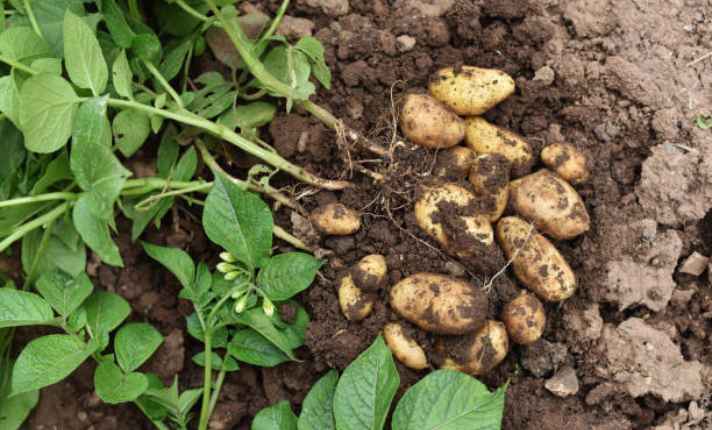
When both plants are growing close together, their roots fight for room, leading to inhibited growth for both. So, it’s best to avoid planting asparagus and potatoes too close to each other to help them grow better.
3. Beans
Beans are great friends with asparagus in the garden. When planted together, they help each other’s growth. Beans add nitrogen to the soil, which helps asparagus grow strong. Different climate and soil conditions can affect how they grow.
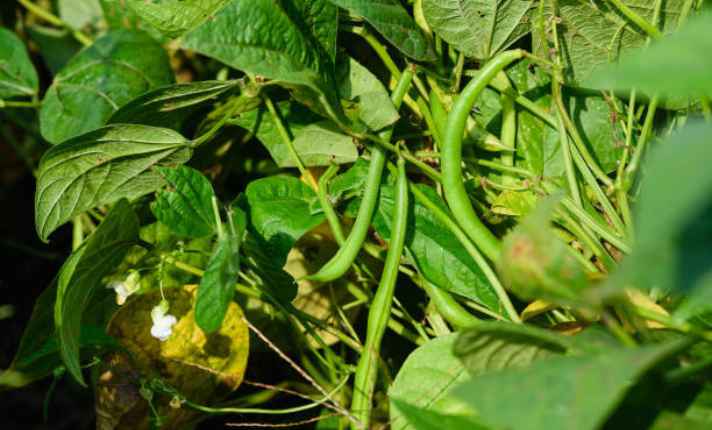
Try companion planting to see how beans and asparagus can thrive. Experiment with different plant varieties and garden beds to find the best conditions.
By planning and observation, you can learn how to cultivate a more productive garden. Watching their plant relationships develop is a fun way to improve your garden.
Check out my other guides to companion planting:
FAQ’s
Q: What Can I Put On My Asparagus Bed?
A: In late fall, I always make sure to give my asparagus bed a generous application of well-composted manure. This really helps the plants stay healthy.
You can also use a balanced, complete fertilizer like 10-10-10 in late fall or late spring, right after the harvest is complete. These steps keep my asparagus thriving and ready for the next growing season.
Q: What Is a Good Cover Crop for Asparagus?
A: When you want to plant asparagus, choosing the right cover crop is important. A good idea is to grow buckwheat during the summer and rye or wheat in the fall and winter.
This helps suppress weed growth and increase organic matter in the soil. Finding a site with few weeds also helps your asparagus grow better.
Q: What Is the Best Natural Fertilizer for Asparagus?
A: Various types of organic amendments can be used in an asparagus bed, including composted manure.
Raw manure can be incorporated prior to planting, but adding raw manure directly to the crowns at planting is not advised.
Q: Can You Grow Asparagus From Cuttings?
A: Yes, asparagus can be grown from cuttings. It’s also possible to start it from seed. Once established, asparagus needs little care.
It continues to provide tasty harvests year after year. Some gardeners have even found patches that are 100 years old!
Q: Is Asparagus Direct Sow or Transplant?
A: Growing asparagus from seed, either in pots or directly into the beds, gives the best viability with a survival rate of around 100%. Additionally, direct sowing avoids transplanting or root shock, preventing delays in valuable root development.
Conclusion
To have a successful garden, it’s important to choose the right companion plants. Asparagus thrives with tomatoes, basil, parsley, dill, and comfrey. These plants work together, making the garden healthier and stronger.
By selecting the right companions, your garden can flourish with less effort, ensuring your asparagus grows beautifully year after year.
